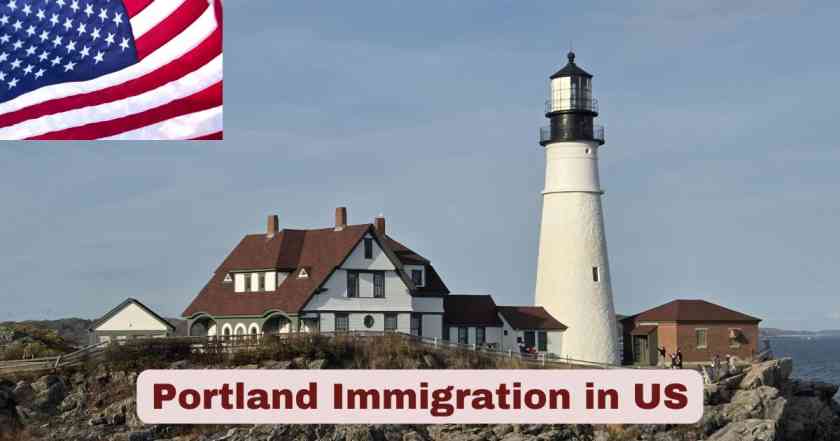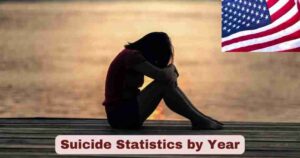Portland Immigration in America 2025
Portland stands as one of Oregon’s most welcoming metropolitan areas for immigrants and refugees, serving as a vibrant gateway for newcomers from across the globe. The city’s immigrant population has grown steadily over recent decades, transforming Portland into a multicultural hub where diverse communities contribute significantly to the region’s economic vitality, cultural richness, and social fabric. With 13.5% of Portland’s population comprising immigrants, the Rose City hosts one of the largest foreign-born communities in Oregon, substantially higher than the statewide average of approximately 10%. These residents bring entrepreneurial energy, fill critical workforce gaps, and enrich the city’s neighborhoods with languages, cuisines, and traditions from every corner of the world.
The immigrant community in Portland plays an indispensable role in shaping the region’s future prosperity. From operating 32.9% of hospitality businesses to comprising more than 21.1% of restaurant and food service workers, immigrants drive key sectors of Portland’s economy. The city’s commitment to immigrant integration is reflected in dedicated municipal programs, language access initiatives, and community partnerships designed to ensure all residents can fully participate in civic life. As Portland navigates demographic shifts and economic transformations, understanding the characteristics, contributions, and needs of its immigrant population becomes increasingly essential for policymakers, businesses, and community organizations working to build an inclusive and thriving metropolitan area.
Key Facts About Portland Immigration in the US 2025
| Immigration Fact | Statistic/Detail | Year |
|---|---|---|
| Total Immigrant Population Percentage | 13.5% of Portland’s total population | 2023-2024 |
| Total Portland Population | Approximately 635,750 residents | 2024 |
| Estimated Number of Immigrants | Approximately 85,826 foreign-born residents | 2024 |
| Portland Metro Area Foreign-Born | 12.5% of Portland-Vancouver-Hillsboro metro area | 2023 |
| Oregon State Foreign-Born Population | 10% of Oregon’s total population (429,000 residents) | 2024 |
| Largest Origin Country | Mexico – representing 24.8% of foreign-born | 2023 |
| Second Largest Origin | Vietnam – representing 7.2% of foreign-born | 2023 |
| Third Largest Origin | China – representing 5.8% of foreign-born | 2023 |
| Languages Spoken (Top 5 Non-English) | Spanish (32%), Vietnamese (21.3%), Chinese (13.7%), Russian (8.8%), Ukrainian (3.3%) | 2024 |
| Limited English Proficiency Population | Over 28% of immigrants (approximately 24,510 residents) | 2024 |
| Immigrant Business Ownership in Hospitality | 32.9% of all hospitality business owners | 2023-2024 |
| Immigrants in Restaurant/Food Service | 21.1% of all restaurant and food service workers | 2023-2024 |
| Immigrants in Transportation/Warehousing | 20.1% of all transportation and warehouse workers | 2023-2024 |
| Immigrant Healthcare Business Owners | 16.4% of all healthcare business owners | 2023-2024 |
| US Refugee Admissions Nationally | 100,060 refugees admitted nationwide | Fiscal Year 2024 |
Data sources: U.S. Census Bureau American Community Survey 2023-2024, Portland.gov Office of Civic Life, USAFacts, Migration Policy Institute, New American Economy Research, Office of Homeland Security Statistics
Portland’s immigrant community represents remarkable diversity in origins, languages, skills, and experiences. The data reveals that Mexican immigrants form the largest single nationality group at nearly one-quarter of all foreign-born residents, reflecting decades of migration patterns driven by economic opportunities and family connections. Asian immigrants collectively represent a substantial portion of the population, with Vietnamese and Chinese communities particularly prominent. European immigrants, including significant numbers from Russia and Ukraine, add to the city’s multicultural character. This diversity extends beyond national origins to encompass a wide range of languages spoken at home, with Spanish being the most common non-English language, followed by Vietnamese, Chinese, Russian, and Ukrainian.
The economic contributions of immigrants to Portland cannot be overstated. Nearly one-third of all hospitality business owners are immigrants, powering the city’s renowned restaurant, bar, and hotel sectors that draw visitors from around the world. Immigrants also constitute more than one-fifth of workers in essential industries like food service and transportation, roles that proved critical during the COVID-19 pandemic and remain vital to Portland’s daily functioning. However, challenges persist, particularly for the 28% of immigrants with limited English proficiency, who face barriers accessing city services, healthcare, and economic opportunities. Portland’s municipal government has responded by establishing language access programs, supporting over 1,000 Limited English Proficiency speakers in multiple languages, demonstrating the city’s commitment to ensuring all residents can participate fully in community life.
Population Demographics of Portland Immigration in the US 2025
| Demographic Category | Statistic | Details |
|---|---|---|
| Total Foreign-Born Population | 85,826 residents | Based on 13.5% of 635,750 total population |
| Portland Metro Area Population | 2.54 million residents | Portland-Vancouver-Hillsboro metropolitan area |
| Percentage of Metro Area Foreign-Born | 12.5% | Higher than national average in many comparable cities |
| Region of Birth – Latin America | 44% | Largest regional origin group for Oregon immigrants |
| Region of Birth – Asia | 30% | Second largest regional origin group |
| Region of Birth – Europe | 17% | Third largest regional origin group |
| Region of Birth – Africa | 4% | Growing refugee population from East Africa |
| Top County for Immigrants in Oregon | Multnomah County | Portland’s primary county, highest immigrant concentration |
| Recent Arrivals (Post-1995) | Nearly one-third | Of all foreign-born residents arrived after 1995 |
| Arrivals Since 1990 | 53% | Over half of immigrant population arrived since 1990 |
| Population Growth (2023-2024) | +1,435 residents | Portland added population for first time since 2020 |
| Estimated 2025 Population | 639,448 residents | Portland State University estimate |
Data sources: U.S. Census Bureau, Portland State University Population Research Center, Migration Policy Institute Oregon Profile, USAFacts 2024
The demographic profile of Portland immigration reveals a community that has experienced substantial growth and diversification over the past three decades. Nearly one-third of all foreign-born residents arrived after 1995, indicating that Portland’s attraction as a destination for immigrants has remained strong even as national immigration patterns have shifted. The fact that 53% of immigrants arrived since 1990 underscores how relatively recent much of Portland’s immigrant population growth has been, with significant implications for integration services, language programs, and community development initiatives. These recent arrivals bring fresh perspectives, skills, and connections to global markets that benefit the entire metropolitan region.
The distribution of immigrants by region of birth reflects broader national trends while also showing Portland’s unique character. Latin American immigrants represent 44% of Oregon’s foreign-born population, with Mexican nationals comprising the single largest country group. This community has deep roots in the region, with established networks that support newcomers and contribute to vibrant neighborhoods throughout the Portland metro area. Asian immigrants account for 30% of the foreign-born population, with particularly strong communities from Vietnam, China, Korea, India, and the Philippines. These communities have built thriving business districts, cultural organizations, and support networks that strengthen Portland’s ties to the Asia-Pacific region. European immigrants comprise 17%, including significant populations from Ukraine, Russia, and Romania, many of whom arrived as refugees fleeing conflict or persecution. The 4% from Africa includes growing communities from Ethiopia, Somalia, and other East African nations, adding new dimensions to Portland’s cultural landscape.
Countries of Origin for Portland Immigration in the US 2025
| Rank | Country of Origin | Number of Residents | Percentage of Foreign-Born |
|---|---|---|---|
| 1 | Mexico | 76,836 (metro area) | 24.8% |
| 2 | Vietnam | 22,122 (metro area) | 7.2% |
| 3 | China | 17,840 (metro area) | 5.8% |
| 4 | India | 17,436 (metro area) | 5.6% |
| 5 | Ukraine | 13,149 (metro area) | 4.3% |
| 6 | Philippines | 11,876 (metro area) | 3.8% |
| 7 | Korea | 10,690 (metro area) | 3.5% |
| 8 | Russia | 9,942 (metro area) | 3.2% |
| 9 | Canada | 7,612 (metro area) | 2.5% |
| 10 | Japan | 7,472 (metro area) | 2.4% |
| – | Ethiopia | Significant community | East African refugee population |
| – | Somalia | Significant community | East African refugee population |
| – | Venezuela | Growing community | Recent asylum seekers |
| – | Guatemala | Growing community | Recent asylum seekers |
| – | Colombia | Growing community | Recent asylum seekers |
Data sources: U.S. Census Bureau American Community Survey 2023 Five-Year Estimates, Stacker.com Analysis, Portland.gov Reports, Migration Policy Institute
The countries of origin data for Portland immigration reveals fascinating patterns that reflect both historical migration flows and contemporary global dynamics. Mexico remains by far the largest source country, with 76,836 residents in the Portland metro area representing nearly one-quarter of all foreign-born residents. This substantial Mexican community has established deep roots across multiple generations, building businesses, cultural institutions, and social networks that make Portland an attractive destination for continued immigration. The Mexican presence is particularly visible in certain neighborhoods and in industries like construction, food service, hospitality, and agriculture, where Mexican immigrants and their descendants play essential roles.
Asian countries collectively represent five of the top ten source nations for Portland’s immigrants. Vietnam ranks second with 22,122 residents, reflecting the legacy of refugee resettlement following the Vietnam War and subsequent family reunification. Portland’s Vietnamese community has developed thriving business districts, particularly in the Jade District of Southeast Portland, where Vietnamese language signs, restaurants, and shops create a vibrant cultural hub. China ranks third with 17,840 residents, including immigrants from mainland China, Hong Kong, and Taiwan, bringing diverse skills ranging from technology and engineering to business and academia. India ranks fourth with 17,436 residents, many of whom work in technology, healthcare, and engineering fields, contributing significantly to Portland’s growing tech sector. The presence of the Philippines (11,876 residents) and South Korea (10,690 residents) further enriches Portland’s Asian diaspora, with these communities particularly prominent in healthcare, business, and professional services.
European countries, particularly from Eastern Europe, represent another significant immigration stream to Portland. Ukraine ranks fifth overall with 13,149 residents, while Russia ranks eighth with 9,942 residents. Many of these immigrants arrived as refugees in the 1990s and early 2000s, fleeing political instability, religious persecution, or seeking economic opportunities. These communities have established Orthodox churches, cultural centers, and mutual aid societies that maintain connections to their homelands while integrating into Portland life. The presence of immigrants from Canada (7,612) and Japan (7,472) rounds out the top ten, representing professional migrants, students, and family-based immigrants who contribute to Portland’s connections with its Pacific Rim neighbors.
Economic Impact of Portland Immigration in the US 2025
| Economic Indicator | Statistics | Immigrant Contribution |
|---|---|---|
| Hospitality Business Ownership | 32.9% of all owners | Immigrants drive Portland’s restaurant, hotel, and bar scene |
| General Services Business Ownership | 20.9% of all owners | Significant entrepreneurship in service sector |
| Healthcare Business Ownership | 16.4% of all owners | Contributing to critical healthcare infrastructure |
| Restaurant & Food Service Workers | 21.1% of workforce | Essential to Portland’s renowned culinary scene |
| Transportation & Warehouse Workers | 20.1% of workforce | Critical for logistics and supply chain operations |
| Manufacturing Employment | 17% of foreign-born workers | Compared to 10% of native-born workers |
| Agriculture Employment | Nearly 3x higher than native-born | Essential for Oregon’s agricultural sector |
| Average Household Income (Portland) | $117,687 (city-wide) | 10% year-over-year increase |
| Median Household Income (Portland) | $88,792 | Rising wages across all populations |
| Poverty Rate (Portland Metro) | 9.2% overall | Lower than many comparable metropolitan areas |
| BIPOC Poverty Rate | 17% | Higher than white non-Hispanic rate of 11% |
| Unemployment Rate (Portland) | 3.6% | Strong job market with immigrant participation |
Data sources: New American Economy Research, Portland.gov, U.S. Bureau of Labor Statistics, Oregon Employment Department, Point2Homes Data, American Community Survey 2023
The economic contributions of immigrants in Portland extend far beyond simple workforce participation to encompass entrepreneurship, innovation, and essential service provision that shapes the metropolitan region’s prosperity. Nearly one-third of all hospitality business owners are immigrants, a statistic that reflects Portland’s international reputation as a food and beverage destination. These immigrant entrepreneurs have built restaurants, cafes, food carts, hotels, and bars that attract tourists, employ thousands of workers, and generate substantial tax revenue. From Vietnamese pho shops to Mexican taquerías, from Ukrainian bakeries to Ethiopian restaurants, immigrant-owned businesses create the diverse culinary landscape that Portland residents and visitors cherish.
Beyond hospitality, immigrants own 20.9% of general service businesses and 16.4% of healthcare businesses, demonstrating entrepreneurial success across multiple sectors. These businesses range from cleaning services and construction companies to medical clinics and home healthcare agencies. Immigrant business owners create jobs not only for other immigrants but for native-born workers as well, contributing to Portland’s overall economic dynamism. Their businesses often serve as bridges between communities, bringing goods, services, and cultural perspectives that enrich the entire region. Many immigrant entrepreneurs maintain international connections that facilitate trade, investment, and cultural exchange, positioning Portland as a globally connected city.
The workforce contributions of immigrants in Portland are equally impressive and essential. More than one-fifth of all restaurant and food service workers are immigrants, filling positions ranging from dishwashers and cooks to servers and managers. Similarly, 20.1% of transportation and warehouse workers are immigrants, playing critical roles in Portland’s logistics infrastructure, which connects the region to national and international markets through the Port of Portland and transportation networks. In manufacturing, 17% of foreign-born workers are employed compared to just 10% of native-born workers, indicating that immigrants help sustain this important sector. Perhaps most notably, immigrants work in agriculture at nearly three times the rate of native-born workers, supporting Oregon’s agricultural economy, which includes wine production, fruit growing, and other crops that depend heavily on immigrant labor.
Educational Attainment of Portland Immigration in the US 2025
| Education Level | Immigrant Population | Comparison to Native-Born |
|---|---|---|
| Less than High School | Higher percentage | Immigrants more likely to lack high school diploma |
| High School Diploma or GED | Comparable rates | Similar completion rates |
| Some College or Associate Degree | Comparable rates | Mixed educational pathways |
| Bachelor’s Degree or Higher | Higher percentage nationally | Immigrants nationally more likely to hold advanced degrees |
| Advanced Degrees (Master’s, PhD, MD) | Higher percentage nationally | Significant representation in graduate education |
| STEM Field Employment | Growing presence | Immigrants filling critical tech and science roles |
| Professional Licensing Challenges | Barriers exist | Foreign credentials often not recognized |
| Adult Education Programs | Strong demand | ESL and job training services heavily utilized |
| College Enrollment (Undocumented) | Approximately 408,000 nationally | Undocumented students in postsecondary education |
| English Language Learner Programs | Extensive services | Portland Public Schools serves diverse ELL population |
Data sources: Migration Policy Institute, American Immigration Council, Higher Education Immigration Portal, U.S. Census Bureau, Oregon Department of Education
Educational attainment among Portland’s immigrant population shows a distinctive bimodal distribution, with immigrants represented at both the highest and lowest ends of the educational spectrum. Nationally, immigrants are more likely than native-born Americans to hold advanced degrees such as Master’s degrees, PhDs, or MDs, particularly among immigrants from Asian countries like India, China, and Korea who often arrive with professional or student visas. These highly educated immigrants contribute to Portland’s technology sector, healthcare system, universities, and research institutions, bringing specialized skills and knowledge that enhance the region’s economic competitiveness. Many work as engineers, scientists, physicians, university professors, and entrepreneurs in knowledge-intensive industries.
Simultaneously, a significant portion of Portland’s immigrant population has lower educational attainment, with higher percentages lacking a high school diploma compared to native-born residents. This pattern is particularly common among immigrants from Latin America and refugees from conflict zones who may have had limited access to formal education in their home countries. These immigrants often arrive with strong work ethics and practical skills but face challenges accessing well-paying jobs due to credential barriers, language limitations, and discrimination. Portland’s adult education system, including English as a Second Language programs, GED preparation classes, and vocational training, serves thousands of immigrant students annually, helping them acquire the credentials and skills needed for economic advancement.
The challenges facing immigrant students and their families extend to the K-12 system, where Portland Public Schools serves a substantial population of English Language Learners from diverse linguistic backgrounds. The school district provides specialized instruction to help these students develop English proficiency while maintaining academic progress in core subjects. However, resource constraints, teacher shortages, and the complexity of serving students with varying levels of prior education create ongoing challenges. At the postsecondary level, approximately 408,000 undocumented students are enrolled in colleges and universities nationwide, including students in Oregon who benefit from state policies allowing in-state tuition and some financial aid regardless of immigration status. These policies, while not universal, reflect recognition that investing in all residents’ education benefits society as a whole.
Language Diversity in Portland Immigration in the US 2025
| Language | Number of LEP Speakers | Percentage |
|---|---|---|
| Spanish | Over 1,000 speakers | 32% of non-English home languages |
| Vietnamese | Over 1,000 speakers | 21.3% of non-English home languages |
| Chinese (Mandarin/Cantonese) | Over 1,000 speakers | 13.7% of non-English home languages |
| Russian | Over 1,000 speakers | 8.8% of non-English home languages |
| Ukrainian | Over 1,000 speakers | 3.3% of non-English home languages |
| Korean | Significant community | City-recognized language for services |
| Japanese | Significant community | City-recognized language for services |
| Somali | Significant community | City-recognized language for services |
| Arabic | Significant community | City-recognized language for services |
| Tagalog | Significant community | City-recognized language for services |
| Total LEP Population | Over 24,510 residents | 28% of all immigrants |
| LEP Population Statewide | 263,313 residents | 6.21% of Oregon’s total population |
| Languages with 1,000+ LEP Speakers | Multiple languages | Qualify for city “safe harbor” translation services |
Data sources: Portland.gov Office of Equity and Human Rights, American Community Survey, Oregon Department of Education, City of Portland Language Access Program
Language diversity stands as one of the most visible and consequential aspects of Portland’s immigrant community, with over 24,510 residents having limited English proficiency, representing 28% of all immigrants. This linguistic diversity enriches Portland’s cultural life while also creating challenges for accessing essential services like healthcare, education, legal assistance, and government programs. The City of Portland has responded by establishing comprehensive language access policies that require city bureaus to provide translation and interpretation services in languages spoken by 1,000 or more Limited English Proficiency residents. This “safe harbor” threshold ensures that the most significant language communities receive consistent support in accessing city services.
Spanish remains the most widely spoken non-English language in Portland, with over 32% of non-English home languages being Spanish. This reflects the substantial Latin American immigrant population, particularly from Mexico, Guatemala, Venezuela, and other Spanish-speaking countries. Spanish speakers can find bilingual services in many Portland institutions, including schools, hospitals, courts, and community organizations. However, gaps in Spanish language services persist, particularly in smaller businesses and specialized professional services, creating barriers for Spanish-speaking residents seeking to navigate complex systems like immigration law, financial planning, or higher education.
Vietnamese ranks as the second most common non-English language at 21.3%, concentrated in Southeast Portland’s Jade District and surrounding neighborhoods. The Vietnamese community has built robust social infrastructure including Vietnamese-language media, religious institutions, and business associations that help maintain linguistic and cultural connections across generations. Chinese speakers represent 13.7% of non-English home languages, with both Mandarin and Cantonese speakers present in Portland. The city’s Chinese community includes long-established families as well as recent immigrants from mainland China, Taiwan, and Hong Kong, creating a diverse Chinese diaspora with varying linguistic and regional affiliations.
Eastern European languages, particularly Russian and Ukrainian, together account for over 12% of non-English home languages, reflecting substantial refugee resettlement from the former Soviet Union. These communities often face unique challenges because Eastern European languages receive less attention in American language services compared to Spanish or Asian languages, despite significant population sizes. The City of Portland’s explicit recognition of Russian and Ukrainian as languages requiring translation services represents an important step in ensuring these communities can access vital resources.
Integration Challenges and Support Services in Portland Immigration in the US 2025
| Challenge Area | Statistics | Support Services |
|---|---|---|
| Limited English Proficiency | 28% of immigrants (24,510 people) | ESL programs, interpretation services, multilingual staff |
| Lack of Health Insurance | Over 28% of uninsured were immigrants | Community health centers, Medicaid access, enrollment assistance |
| Professional Credential Recognition | Significant barrier | Credential evaluation services, bridging programs |
| Access to Legal Services | High demand, limited capacity | Immigration Legal Services, nonprofit legal aid |
| Language-Accessible Emergency Info | Critical during COVID-19 | Multilingual emergency communications, community liaisons |
| Housing Affordability | Cost 20.1% above national average | Affordable housing programs, tenant protections |
| Transportation Access | Essential for immigrant workers | Public transit, reduced-fare programs |
| Workforce Development Programs | 1,200+ participants annually | Worksystems, IRCO, job training scholarships |
| Refugee Resettlement Services | Services suspended March 2025 | Previously: IRCO, Catholic Charities, Lutheran Services |
| Asylum Seeker Support | Growing need | Grassroots organizations, emergency shelter, legal aid |
| Culturally-Specific Services | Multiple organizations | Community-based organizations serving specific populations |
| Youth and Family Services | Comprehensive programs | After-school programs, family counseling, mentorship |
Data sources: Portland.gov, IRCO (Immigrant & Refugee Community Organization), Worksystems, New American Economy, Multnomah County, Sisters of the Road
Integration challenges facing Portland’s immigrant community are multifaceted and interconnected, requiring coordinated responses from government agencies, nonprofit organizations, and community groups. Limited English proficiency affects 28% of immigrants, creating cascading barriers to employment, education, healthcare, civic participation, and social integration. While Portland has made significant investments in language access, including hiring multilingual staff, contracting with interpretation services, and translating key documents, demand far exceeds available resources. Many immigrants struggle to access specialized services like mental health counseling, legal advice, or technical education due to language barriers, limiting their ability to fully participate in Portland’s opportunities.
Healthcare access represents another critical challenge, with over 28% of uninsured Portland residents being immigrants. While some immigrants qualify for Medicaid or can access care through community health centers, many face obstacles including lack of insurance, limited understanding of the American healthcare system, cultural and linguistic barriers with providers, and fear related to immigration status. The COVID-19 pandemic highlighted these vulnerabilities, as immigrant communities experienced higher infection rates due to crowded housing, frontline work, and barriers to accessing testing and treatment. Portland’s public health system has worked to improve outreach to immigrant communities, but persistent gaps remain in preventive care, chronic disease management, and mental health services.
Professional credential recognition poses significant barriers for highly educated immigrants who arrive with degrees and licenses from other countries. A doctor from Ukraine may drive a taxi, an engineer from India may work in retail, and a teacher from Mexico may clean houses because their foreign credentials are not recognized in the United States. Navigating the complex process of credential evaluation, meeting additional requirements, and passing licensing exams in a second language can take years and significant financial resources. Portland-area organizations provide some support through credential evaluation services, bridging programs, and English language classes tailored to professionals, but many skilled immigrants never work in their trained fields.
The suspension of refugee resettlement services in March 2025 has created new challenges for Portland’s refugee support infrastructure. For decades, organizations like the Immigrant and Refugee Community Organization (IRCO), Catholic Charities, and Lutheran Community Services Northwest operated federally funded programs that helped refugees resettle in Portland, providing initial housing, employment services, language classes, and cultural orientation. With federal refugee admissions halted due to policy changes, these organizations have had to pivot to serving other immigrant populations while maintaining hope that refugee programs will resume. Meanwhile, asylum seekers continue arriving in Portland, fleeing violence and persecution from countries like Venezuela, Guatemala, Colombia, Angola, and Congo. Unlike refugees who receive federal support, asylum seekers often arrive with nothing and face years waiting for their cases to be heard while ineligible for most public benefits, creating humanitarian challenges that grassroots organizations struggle to address.
Portland Metro Area Immigration Trends in the US 2020-2024
| Trend Indicator | 2020 | 2024 | Change |
|---|---|---|---|
| Portland City Population | 652,503 | 635,750 | -17,000 (recovery to 635,750 by July 2024) |
| Portland Metro Area Population | 2.51 million | 2.54 million | +30,000 |
| Foreign-Born Population (State) | 9.9% | 10% | +0.1% |
| Net Migration (Portland Metro) | Positive | Negative | Portland metro experienced negative net migration |
| Natural Population Change (State) | Declining | -3,850 annually | Fourth consecutive year of natural decline |
| Migration as Population Growth Source | Partial | 100% | All growth from migration, offsetting natural decline |
| Asylum Seeker Arrivals | Lower | Increasing | Primary sources: Central Africa, Latin America |
| Refugee Federal Program Status | Active | Suspended (March 2025) | No new refugee admissions |
| Working Age Population (25-54) | 39.3% | 41.0% | +1.7% (nearly 2% increase) |
| High-Income Households ($200K+) | 40,000 (Multnomah County 2021) | 55,000 (Multnomah County 2023) | +37.5% increase |
| Oregon Migration Ranking | 24th (2021) | 45th (2023) | Significant decline in migration attractiveness |
Data sources: U.S. Census Bureau, Portland State University Population Research Center, Oregon Employment Department, Common Sense Institute Oregon, Migration Policy Institute
Population trends in Portland and the surrounding metropolitan area between 2020 and 2024 reveal a complex picture of demographic shifts, economic changes, and migration patterns. Portland city proper lost approximately 17,000 residents from its 2020 peak of 652,503, declining to around 618,000 before recovering to 635,750 by July 2024. This represents the first population increase since 2020, suggesting Portland may have turned a corner after several years of population loss driven by out-migration, housing costs, and quality of life concerns. However, the broader metro area continued growing, reaching 2.54 million residents, indicating that while some people left Portland proper, many moved to suburbs within the metropolitan region rather than leaving entirely.
Oregon’s migration patterns show concerning trends at the state level, with Oregon’s ranking for net migration falling dramatically from 2nd place in 2016 to 24th in 2021, 42nd in 2022, and 45th in 2023. This decline reflects increased domestic out-migration, where more people move out of Oregon than arrive from other states, combined with relatively modest gains from international migration. Factors driving out-migration include housing affordability challenges, wildfire smoke and climate concerns, political polarization, and competition from states with lower taxes and living costs. The Portland metro area experienced negative net migration between 2020 and 2024, meaning more people left than arrived, with population gains coming entirely from natural increase (births minus deaths) rather than migration.
Interestingly, Oregon’s natural population change has turned negative for four consecutive years, with deaths exceeding births by 3,850 annually as of 2024. This unprecedented shift reflects Oregon’s aging population, declining birth rates, and the state’s demographic maturity. Without migration to offset natural population decline, Oregon’s total population would be shrinking, making immigration increasingly essential to maintaining population levels and economic vitality. The fact that all of Oregon’s population growth now comes from migration underscores the critical role that both domestic and international migrants play in the state’s demographic future.
The composition of migration is shifting as well, with asylum seekers becoming a growing portion of new arrivals while refugee resettlement has been suspended. Asylum seekers from countries like Venezuela, Guatemala, Colombia, Angola, and Congo arrive in Portland with urgent humanitarian needs but limited access to support services since they lack the federal benefits available to refugees. This creates strain on Portland’s charitable organizations and local government resources while the asylum seekers themselves face extreme hardship waiting months or years for their cases to be adjudicated. The suspension of refugee resettlement in March 2025 eliminated one of Portland’s traditional immigration pathways, though it remains unclear whether this represents a temporary policy change or a longer-term shift in federal immigration priorities.
Future Outlook for Portland Immigration Beyond 2025
The future of immigration in Portland will be shaped by multiple factors including federal immigration policies, economic conditions, climate change, global conflicts, and local integration efforts. Federal policy remains perhaps the most significant variable, with potential changes in refugee admissions, asylum processing, visa allocations, and enforcement priorities capable of dramatically altering immigration flows to Portland. The suspension of refugee resettlement in 2025 illustrates how federal policy shifts can immediately impact local communities, eliminating streams of humanitarian immigration that had brought diverse populations to Portland for decades. Similarly, changes in employment-based visa categories, family reunification policies, or pathways to citizenship could expand or contract opportunities for immigrants to come to Portland legally.
Portland’s economic trajectory will significantly influence its attractiveness to immigrants. The city’s relatively diverse economy, with strengths in technology, manufacturing, healthcare, hospitality, and creative industries, has historically drawn immigrants seeking economic opportunities. However, housing affordability challenges, with costs 20.1% above the national average, create barriers for lower-income immigrants who struggle to find affordable housing while building financial stability. If Portland can increase housing supply through zoning reforms, affordable housing investments, and innovative development approaches, the city could remain accessible to diverse immigrant populations. Conversely, if housing costs continue rising faster than wages, Portland may increasingly attract only highly skilled, high-income immigrants while becoming unaffordable for working-class immigrant families.
Climate change may make Portland increasingly attractive as a migration destination both domestically and internationally. As parts of the United States and world face extreme heat, drought, hurricanes, and other climate impacts, Portland’s relatively temperate climate (despite challenges with wildfire smoke) could draw climate migrants seeking more stable environmental conditions. This could include both domestic migrants from California, Arizona, and other western states, as well as international immigrants from regions experiencing climate-driven displacement. Managing this potential influx while maintaining quality of life and environmental sustainability will require significant planning and investment in infrastructure, housing, and services.
The success of integration efforts will determine whether immigrants can fully contribute to and benefit from Portland’s opportunities. This includes continuing expansion of language access services, ensuring immigrants can access quality education and healthcare, supporting immigrant entrepreneurship, protecting worker rights, and fostering inclusive communities where immigrants feel welcomed and safe. Portland’s existing infrastructure of immigrant-serving organizations, language access programs, culturally-specific services, and inclusive policies provides a strong foundation, but sustained investment and political will are essential. As national debates over immigration continue, Portland’s commitment to supporting its immigrant residents will shape whether the city can realize the full potential of its diversity as a source of economic vitality, cultural enrichment, and community strength.
Disclaimer: The data research report we present here is based on information found from various sources. We are not liable for any financial loss, errors, or damages of any kind that may result from the use of the information herein. We acknowledge that though we try to report accurately, we cannot verify the absolute facts of everything that has been represented.







